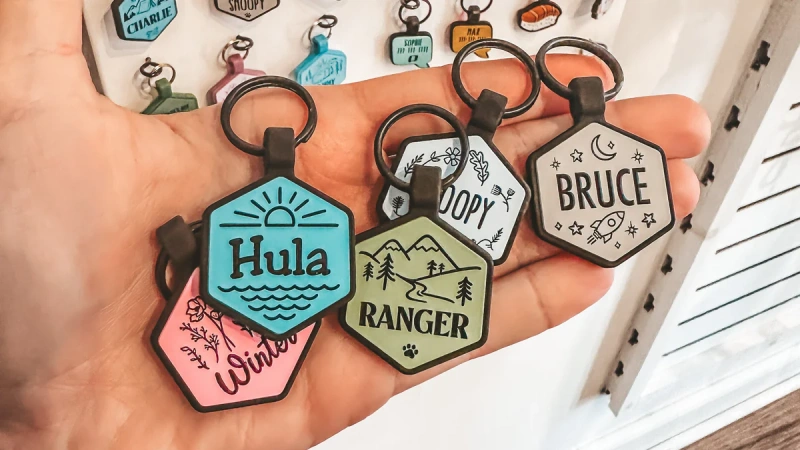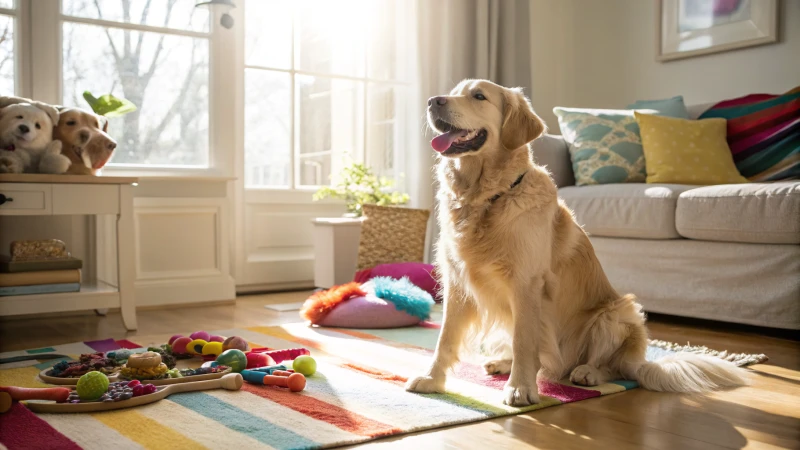
Do you worry that your dog has too many toys? You’re not alone! Dog owners everywhere think about this, too. Often, I ask myself the same question as a dog parent.
Toys are important for a dog’s happiness and health. However, having too many toys might cause overstimulation. Too many toys could also lead to behavioral problems and safety risks. Experts, like veterinarians and trainers, give advice on managing toy collections. This blog post shares their insights. You should definitely check it out!
I remember the day I returned home with many toys for my dog. It felt like I brought a tiny pet shop into my house. I thought my dog would be very happy. But I soon noticed his confusion. He moved quickly from one toy to another without actually playing. Experts teach that dogs, like humans, get overstimulated. Dogs need the right number of toys to stay happy. Too many toys lead to chaos.
Dogs can become overwhelmed by too many toys.True
Veterinarians suggest that excessive toys can lead to overstimulation in dogs, affecting their behavior and mental health.
All dogs need a large variety of toys to be happy.False
While toys are important, too many can cause issues; moderation is key for a dog's well-being.
What are the signs that my dog has too many toys?
Do you ever wonder if your dog has too many toys? I’ve thought about it and it really concerns dog parents. Dogs might feel overwhelmed with many toys. It is important to create a balanced play environment.
If your dog appears distracted, hyperactive or uninterested in toys, they probably have too many toys. Observe behavioral changes like chewing destructively or guarding resources. These behaviors indicate a problem.
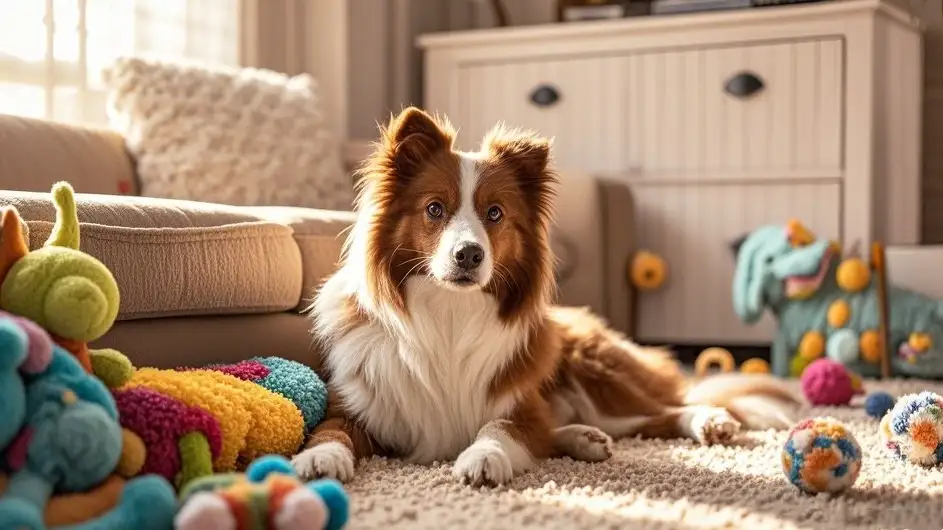
Signs of Overstimulation in Dogs
When a dog has too many toys, they might show signs of overstimulation. This can manifest as:
-
Difficulty Focusing: If your dog seems distracted and unable to engage with any particular toy, it may be overwhelmed by the options available.
-
Hyperactivity: A sudden spike in energy, where your dog seems restless and unable to settle down, can indicate too many stimuli from their toys.
Consider monitoring your dog’s play behavior. Look for shifts in how they interact with their toys; if they bounce from one to another without a clear focus, it might be time to reduce their collection. For more insights on managing playtime effectively, check out engaging play techniques1.
Behavioral Changes
Excessive toys can lead to several behavioral issues:
| Behavior | Description |
|---|---|
| Destructive Chewing | Dogs may chew destructively if they have too many choices, leading to potential health risks. |
| Resource Guarding | Some dogs may begin to hoard toys, showing possessive behavior that can create tension with other pets. |
| Boredom | Ironically, too many toys can lead to boredom if the dog cannot decide which toy to play with. |
If you notice these behaviors, consider rotating your dog’s toys regularly or limiting their selection to 5-10 high-quality items. This approach keeps them engaged while avoiding overwhelming them with choices. Learn more about effective toy rotation2.
Safety Concerns
An abundance of toys can also raise safety concerns:
- Ingestion Hazards: Toys that break easily may pose choking hazards, or parts could be ingested, leading to gastrointestinal issues.
- Toxic Materials: Some toys might contain harmful chemicals, which can negatively impact your dog’s health. Always opt for high-quality, non-toxic toys. For further information on safe pet products, visit pet safety guidelines3.
Signs of Disinterest
If your dog has too many toys, they may show signs of disinterest:
- Ignoring New Toys: If your dog does not seem excited about new toys or plays with them briefly before moving on, it could be a sign that they have too much.
- Reduced Playtime: A decline in the amount of time your dog spends playing could indicate they feel overwhelmed by their choices.
Regularly assess how your dog interacts with their toys and consider simplifying their options. You can learn more about assessing your dog’s interest in play at understanding dog preferences4.
Dogs with too many toys may show signs of distraction.True
Overwhelmed by choices, dogs can struggle to focus on any toy, indicating overstimulation.
Excessive toys can lead to destructive chewing in dogs.True
When faced with many options, dogs may chew destructively, posing health risks.
How can I choose the right toys for my dog?
Discovering the best toys for your dog feels like starting a small adventure together! Toys not only increase their happiness but also contribute to their safety and health. Let’s explore how I approach this enjoyable and important task.
Select the right toys for your dog by looking at its size, age and chewing behavior. Choose safe toys. Avoid toxic materials and small pieces. This is very important. Rotate their toys frequently. This keeps them really interested and excited.
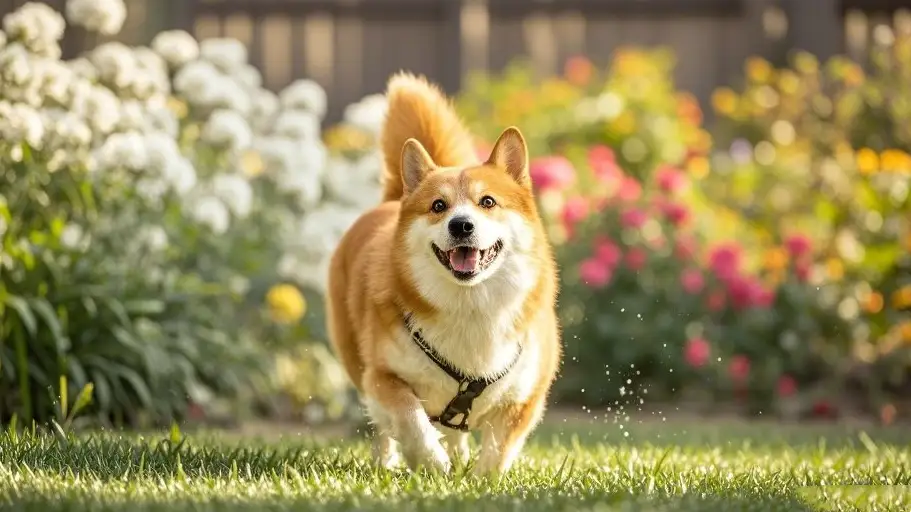
Selecting Toys for My Dog
Selecting toys for my dog has been a very joyful journey full of learning moments. Bringing home my cute pup Max, I felt overwhelmed by all the toy choices. Picking the right toys could really impact his playtime and happiness.
Assess Your Dog’s Size and Breed
Understanding your dog’s size and breed is essential. When I got Max, a Golden Retriever, I noticed he needed strong toys because of his energy. The KONG Classic5 suited him perfectly. Max spent hours chewing and playing with it without tearing it apart.
In contrast, my friend picked toys for her Chihuahua, Bella, which she could easily carry. Different breeds definitely need different toys.
Consider Your Dog’s Age
Age changes toy preferences. Puppy Max enjoyed chew toys to ease his teething pain. As an adult, he loves puzzle toys that really challenge his mind.
Here’s a quick reference table:
| Age Group | Recommended Toys |
|---|---|
| Puppies | Chew toys |
| Adults | Puzzle toys |
| Seniors | Gentle chew toys |
Chewing Habits Matter
Max is an enthusiastic chewer. Identifying this, I chose durable toys to withstand his bites. After several squeaky toys didn’t last, I turned to strong options like Nylabone6. These keep him entertained longer.
Safety First
Safety is crucial. I learned to avoid toys with small parts or toxic materials. Checking for non-toxic labels and durability is very important. Every toy needs to be safe for Max.
Rotate Toys for Engagement
Rotating toys every few days keeps things exciting for Max. This approach prevents boredom and avoids overwhelming him with choices.
Example of a Rotation Schedule:
- Day 1-3: Puzzle toys
- Day 4-6: Fetch toys
- Day 7-9: Chew toys
This routine keeps Max excited about playtime.
Choose Quality Over Quantity
Finally, I invest in fewer but high-quality toys. They not only last longer but also have a positive impact on Max’s health. Brands like PetSafe7 focus on safety and durability.
Choosing the right toys has been an enriching adventure that brings joy to Max and strengthens our bond.
Larger breeds need sturdier toys than smaller breeds.True
Sturdier toys are essential for larger breeds due to their strength, while smaller breeds require lighter options for comfort and safety.
Rotating toys can prevent boredom in dogs.True
Regularly rotating toys keeps dogs engaged and interested, preventing boredom without overwhelming them with choices.
What health risks are linked to having too many toys?
Do you ever feel lost among all the toys your children own? I definitely do! While researching this, I found some surprising health dangers linked to having too many toys. Parents need to know about these risks. Let’s look into them together.
Too many toys might overstimulate children. Safety dangers might also increase. Behavioral problems like possessiveness may arise. Toy waste may cause environmental issues. Clutter might lead to mental health problems. Responsible toy management is truly important for children’s well-being.
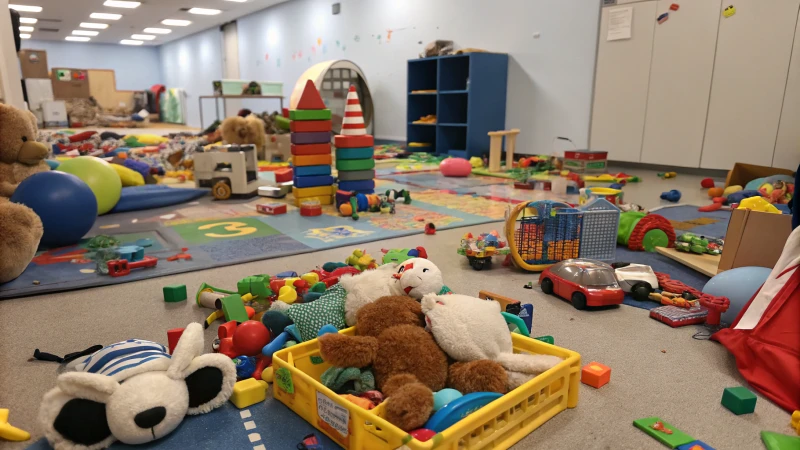
Overstimulation and Reduced Creativity
Too many toys create more than just clutter at home. They pose real challenges for children, both physically and emotionally. Organizing toys is important for a healthy play space.
A growing toy collection overstimulates kids easily. Imagine a child facing a pile of colorful toys. It becomes overwhelming! My son, who loved building with blocks, felt frustrated. He didn’t know where to start with so many choices. His creativity was blocked by the excess.
This situation, called Too Many Toys Syndrome8, brings anxiety and frustration. I found that selecting a few toys helps a lot. With fewer toys, my children play more meaningfully and create better.
Physical Safety Concerns
Safety is crucial for parents. Many toys present physical dangers at home. I have often tripped over toys, which might lead to accidents. Some toys have tiny parts that are choking hazards for small kids.
Here’s a quick table highlighting the safety concerns:
| Safety Concern | Description | Actionable Solution |
|---|---|---|
| Choking Hazards | Small parts that can be swallowed by children | Regularly inspect toys for size safety |
| Trip Hazards | Toys left on the floor can cause falls | Establish a clean-up routine after play |
| Toxic Materials | Some toys may contain harmful chemicals | Choose certified non-toxic toys |
To keep our play area safe, I introduced a quick clean-up after playtime. Always think about safety!
Behavioral Issues
Too many toys cause behavioral problems. I noticed possessiveness in my kids over their toys. This often led to arguments during playdates or family events.
Children with too many options may not appreciate their toys properly. My youngest often left his toys everywhere. This led to careless behavior. Teaching them to value what they have is important.
Resource Guarding9 is one such behavior where children or pets become overly protective of their belongings, which can hinder social interactions.
Environmental Impact
I care about our planet and think about the environmental impact of toys. Many plastic toys end in landfills, polluting and harming animals. This made me consider sustainable toy options.
There are many resources on sustainable toy choices10 for those who want eco-friendly alternatives. Choosing wisely helps kids and protects the environment.
Mental Health Effects
Clutter affects mental health, not just for kids but for parents too. A living room cluttered with toys causes stress and anxiety. This chaos makes it hard to relax and play well.
Regularly managing our toy collection improved our well-being. An organized play area transformed playtime into a joyful experience.
Excessive toys can cause overstimulation in children.True
Having too many toys can overwhelm children's senses, leading to frustration and reduced focus on individual tasks.
Toys made from plastic contribute to environmental pollution.True
The production and disposal of plastic toys significantly harm the environment, necessitating sustainable toy options.
How often should I rotate my dog’s toys?
Are you confused about how often to change your dog’s toys? I completely understand! Changing their toys regularly keeps playtime fun. It also helps reduce naughty behavior. Let’s explore the best ways to do this together!
Switch your dog’s toys every 1-3 weeks. This probably improves their playtime. Also, it reduces boredom. It even stops destructive behavior. Watch how much they play with each toy. This helps you find the best switch time for your pet.
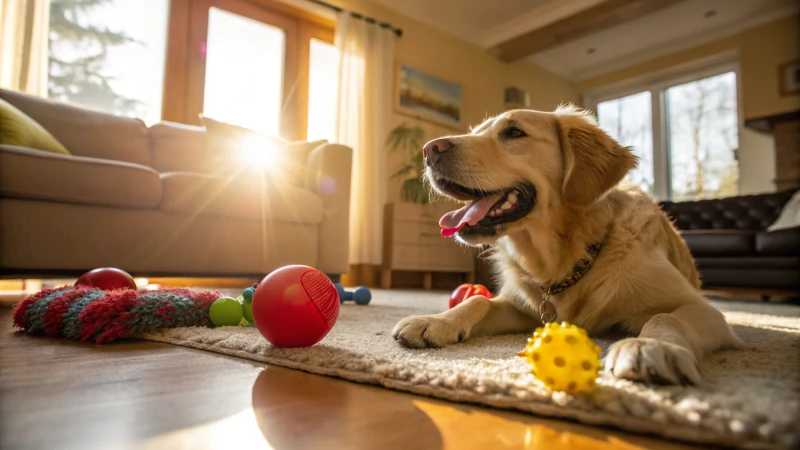
Understanding the Importance of Toy Rotation
Rotating your dog’s toys is crucial for their mental and physical well-being. Dogs, like humans, can become bored if they have constant access to the same toys. By rotating toys, you keep their playtime fresh and engaging. Here are some key benefits of regular toy rotation:
- Mental Stimulation: New toys spark a dog’s curiosity and might even improve problem-solving skills. I’ve seen Bella face new puzzles with focus, like a child playing a loved game!
- Reduced Destructive Behavior: Bored dogs might chew on furniture or other items. I’ve learned this the hard way. New toys can prevent these little accidents.
For a simple rotation plan, consider keeping a few toys accessible while storing others away. This way, when you swap them out, it feels like Christmas morning for your dog! To find out more about pet activities that excite11, click here.
How Often Should You Rotate?
The frequency of toy rotation can vary depending on your dog’s interest level and personality. Here are some general guidelines:
| Dog Type | Suggested Rotation Frequency |
|---|---|
| Puppies | Every 3-5 days |
| Active Breeds | Every week |
| Older Dogs | Every 1-2 weeks |
| Less Active Breeds | Every 2-3 weeks |
It’s essential to observe how your dog reacts. If they seem less interested in their toys, it might be time for a change! Check out this article on dog behavior12 insights for further understanding.
Monitoring Engagement Levels
Keep an eye on your dog’s engagement levels with their toys. Signs that it’s time to rotate include:
- Ignoring Toys: If your dog passes their toys without looking, that’s a sign.
- Excessive Barking: This may show boredom or frustration. I’ve seen Bella bark at me to ask for something new to chew!
- Destructive Chewing: If they target your furniture, it’s really time for fresh options.
You can also try rotating the toys based on seasons or special occasions. For instance, Halloween-themed toys bring extra joy during the spooky season! To learn more about seasonal pet care13 tips, explore this link.
Types of Toys to Include in Rotation
When selecting toys for rotation, consider including a mix of:
- Chew Toys: Strong options that endure heavy chewing.
- Interactive Toys: Puzzles or treat dispensers that challenge your dog mentally.
- Plush Toys: Soft toys that provide comfort but should be monitored for damage.
- Balls and Fetch Toys: Perfect for keeping Bella active and entertained.
A varied selection makes sure you cater to your dog’s different play styles and likes. For tips on top dog toys14, check this link!
Safety Considerations When Rotating Toys
Safety should always be a priority when managing your dog’s toys. Here are some tips I always remember:
- Inspect Regularly: Look for damage to avoid choking hazards. Bella had a close call with a toy losing a small piece!
- Quality over Quantity: Choose strong, non-toxic toys over cheap ones that break easily.
- Avoid Small Parts: Ensure all toy parts are safe for your dog’s size and chewing habits.
By thinking of these safety tips, your dog can enjoy their playtime while staying safe. For more safety tips about pet products, visit this guide15.
Rotating dog toys reduces boredom and destructive behavior.True
Regularly changing toys keeps dogs mentally stimulated and engaged, preventing them from becoming bored and chewing on inappropriate items.
Older dogs need toy rotation every 1-2 weeks.True
To maintain interest, older dogs should have their toys rotated every 1-2 weeks based on their engagement levels and preferences.
Conclusion
Discover insights from veterinarians on managing your dog’s toy collection to prevent overstimulation while ensuring their happiness and safety.
-
Discover expert insights into managing your dog’s toy collection for optimal engagement and safety. ↩
-
Learn effective strategies for toy management that can benefit both you and your pet. ↩
-
Ensure the safety and well-being of your dog by exploring recommended toy types and materials. ↩
-
Find out how to keep your dog engaged and happy with fewer toys through rotation techniques. ↩
-
This link provides a comprehensive guide on selecting safe and engaging dog toys tailored to your pet’s needs. ↩
-
Explore this resource for expert recommendations on durable toys for aggressive chewers. ↩
-
Learn how to rotate dog toys effectively to maintain your pet’s interest without causing overstimulation. ↩
-
Discover how managing toy collections can enhance children’s well-being by reducing clutter and overstimulation. ↩
-
Understand resource guarding behavior in children due to excessive toys and how to address it effectively. ↩
-
Learn about sustainable toy options that minimize environmental impact while ensuring safety for children. ↩
-
Discover expert recommendations on how frequently you should rotate your dog’s toys for optimal engagement and mental stimulation. ↩
-
Learn how to monitor your dog’s engagement levels with their toys to know when it’s time for a change. ↩
-
Get insights into the best types of toys to include in your dog’s rotation for maximum fun and safety. ↩
-
Understand key safety tips when rotating your dog’s toys to ensure their well-being during playtime. ↩
-
Explore guidelines on choosing high-quality, safe toys that can withstand regular rotation without posing risks to your dog. ↩


